Paly Python's Parikrma Mission
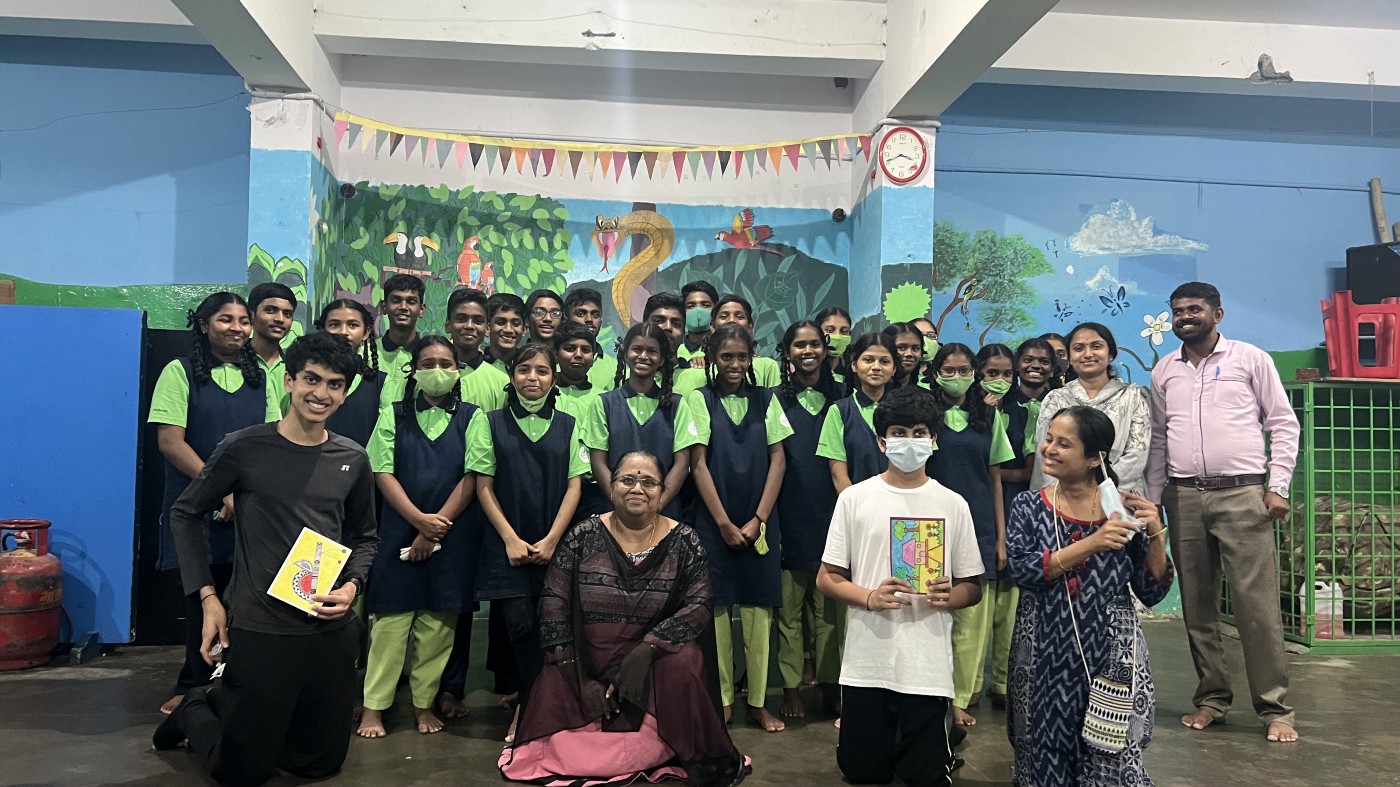
Read on Medium: https://medium.com/@rohanphanse/paly-pythons-parikrma-mission-30780fdc9d40
The eager shouts of the students as they proffered up the answer. Their determined faces as they furiously typed away at the laptops they huddled around. The tight-knit family of Parikrma with the chorus of “annas” and “akkas” echoing in the classroom, signifying the warm bond between student and teacher. These are my memories of my time in Bangalore this summer at the Parikrma Humanity Foundation, which was such an enriching experience for me, and one that I will treasure for the rest of my life.
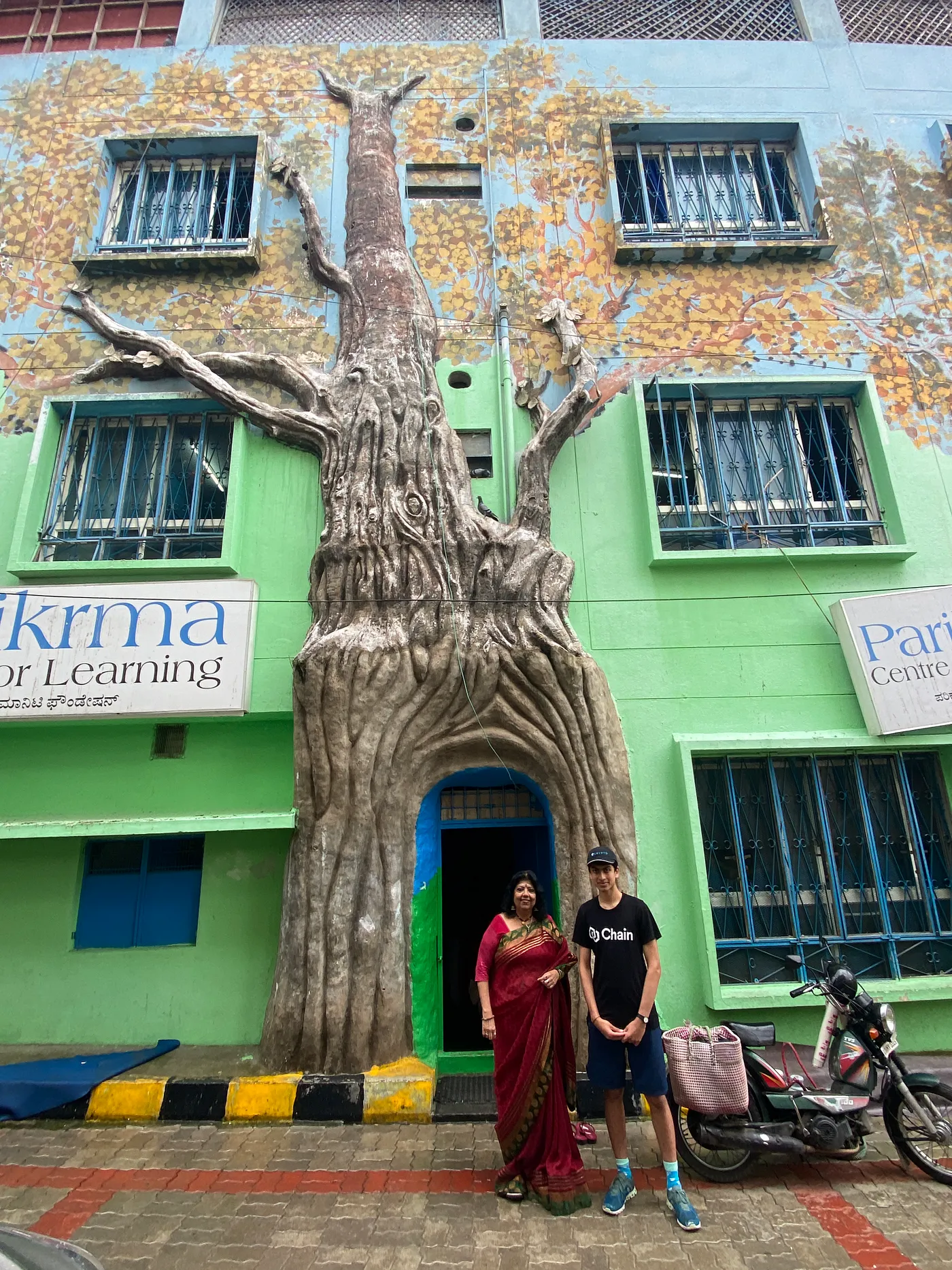
What is a Paly Python?
I can’t wait to tell you more about Paly Python’s Parikrma Mission, but first let me introduce myself. My name is Rohan, and I am a senior at Palo Alto High School. I love creating web apps and solving big problems with computer science, unlocking the workings of the universe by learning physics and chemistry, and playing 70s songs on my guitar (you can't go wrong with the Beatles and Eagles).
I am the founder and president of Paly Python, a student-led non-profit organization with the mission of empowering students to develop the computer science skills they need to thrive in the 21st century and better the world. We are a group of students passionate about what we do, and we teach our students with patience, kindness, and respect. We’re committed to removing barriers to entry for all students, especially those from underprivileged backgrounds, which is why we offer our high-quality courses and mentorship for free.
I founded Paly Python in 9th grade, and over the last 3 years, my team and I have accomplished many wonderful things for ourselves and the community, from growing our programming club to 120+ members, holding Python and Javascript summer camps (read more here), and hosting a hackathon focused on the global challenge of climate change.
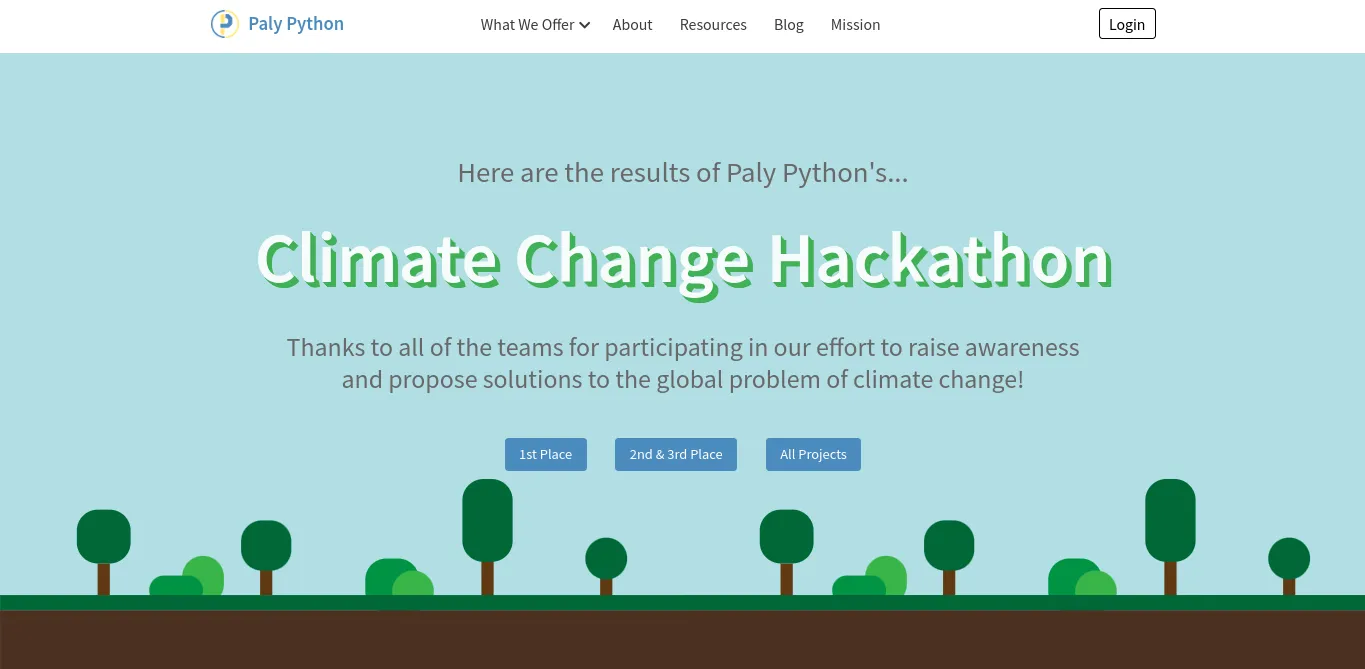
Last year, the team and I launched the Paly Python Foundation to channel our efforts towards empowering students from underserved backgrounds and communities. After observing the relative lack of CS opportunities in nearby East Palo Alto, the Paly Python team and I decided to tackle this issue in a small but meaningful way by teaching a three-week Python course attended by students (and a few adults!) in East Palo Alto. We launched a follow-up one-on-one mentorship program to allow our participants to continue learning, where they met with an experienced Paly Python team member over the course of a few months and mastered advanced topics from Machine Learning to Web Development.
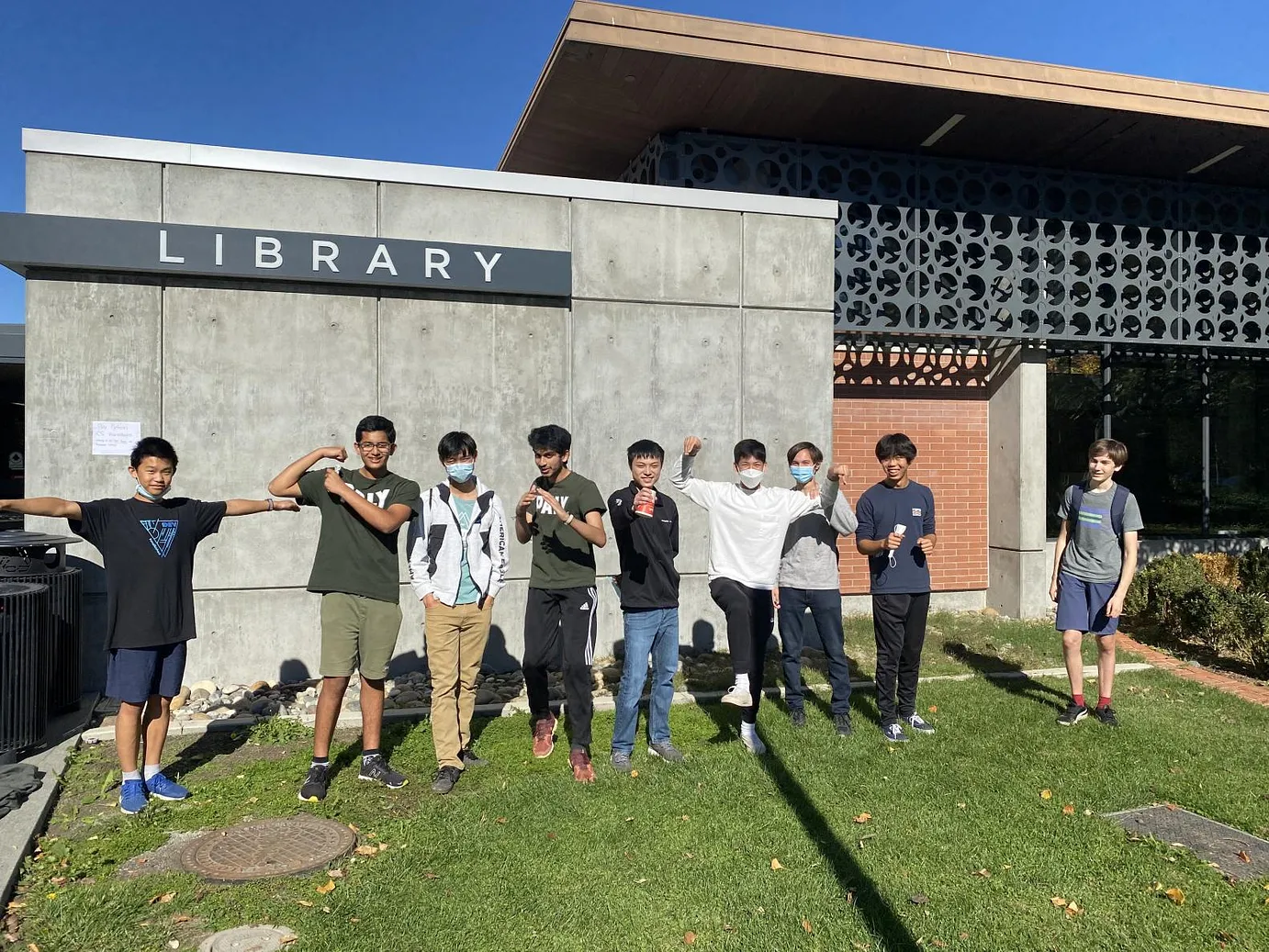

Having succeeded at making an impact on our local community in East Palo Alto, we set our sights higher to the international stage. So without further ado, here is how Paly Python partnered with the Parikrma Humanity Foundation and made a difference for 60 ninth-graders on the other side of the globe in Bangalore, India.
Parikrma Prep
It was April 3rd when I opened up the Paly Python gmail account and found an email titled “Greetings from Parikrma Humanity Foundation” from Kalpana, who I would learn was the academic director of Parikrma. As I read the email, I became excited and thankful that the countless hours we had spent sending out emails to organizations in India in hopes of partnering with them had finally paid off. Our marketing lead Milind met with Parikrma immediately to ensure we didn’t drop the ball, and I joined him later to speak with Kalpana and Latha over Google Meet. I was very impressed with all the amazing things Parikrma was doing throughout their four schools in Bangalore that educate over 1,500 students from slums and orphanages in the city.
In our meetings, we dove into logistics of holding a course in India, and something that came up was the difficulty of getting students online. Parikrma’s schools only had a few desktops and lacked laptops, so I decided to bring 10 chromebooks to India, use them to teach the course, and donate them as a permanent computer lab to Parikrma.
It was a tight squeeze, but I packed them all up and flew with my family to India. I was staying in India with my grandparents for a while before I’d have to go to Bangalore, and it was in their flat where I finished configuring all of the chromebooks with Linux, VSCode, and Python.
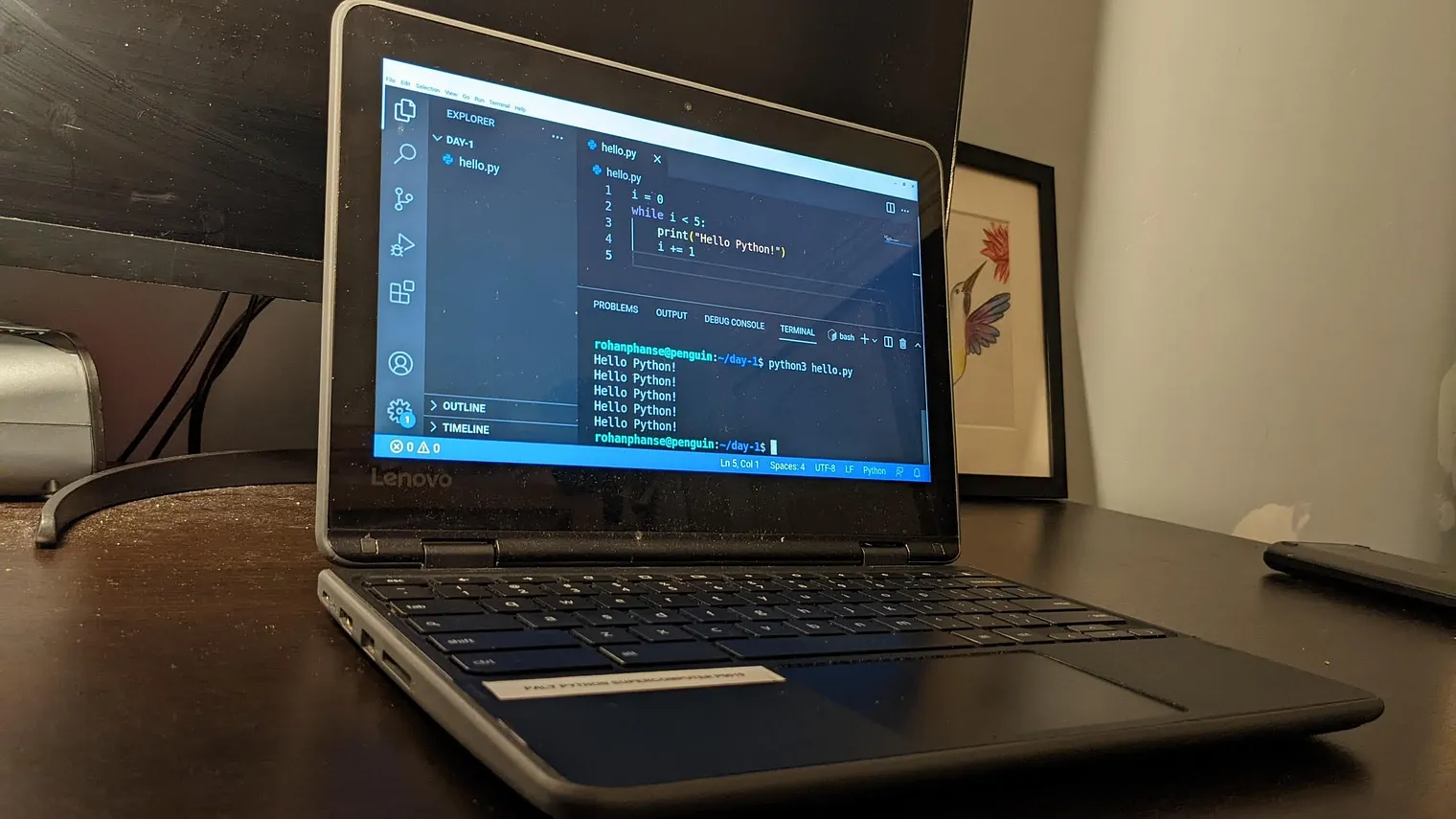
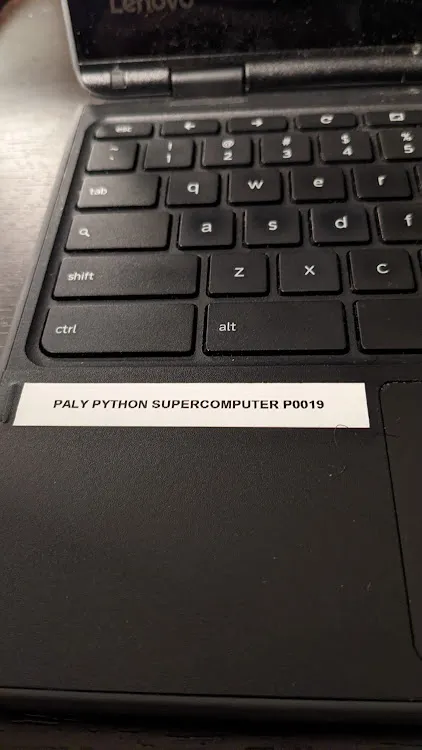
Setup
When I got to Bangalore on Monday, the agenda for the day was to set up the computers and meet Kalpana, Latha, and the teachers.
The customs of Parikrma were charming and helped us feel at home. As the guests, we lit diyas and balanced them on a bed of floating petals. Kalpana noticed me observing the playful blue and green paint on the walls and told me that those colors represented the Parikrma student philosophy. The green base symbolized being grounded in your values and community, and the blue upper half represented reaching for the sky and letting there be no barrier for your aspirations and dreams.
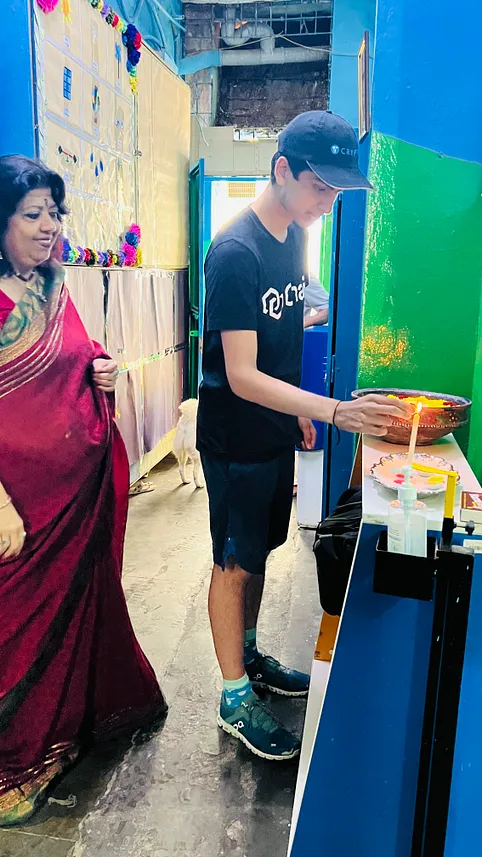
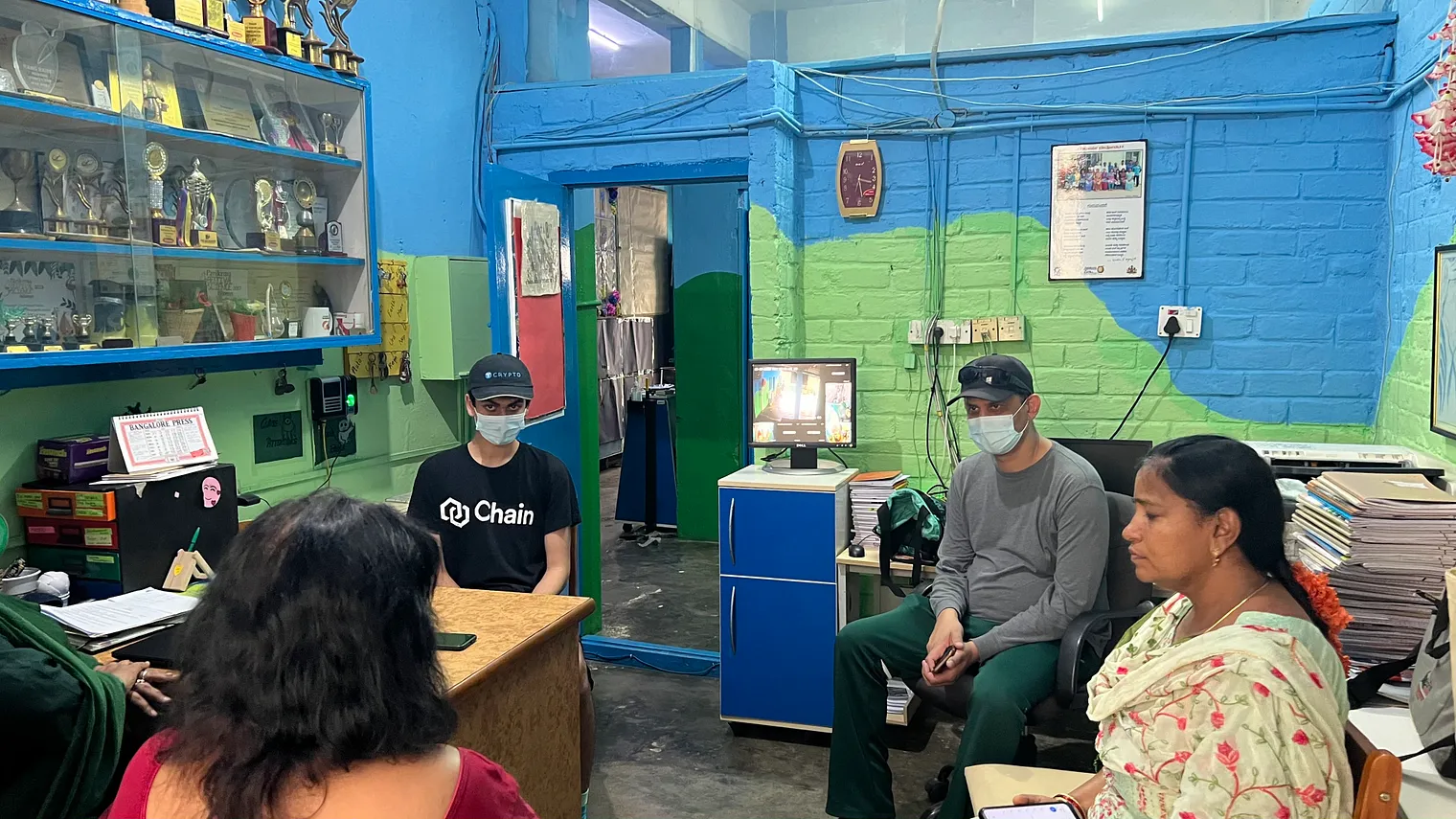
The atmosphere was friendly and familial, and I didn’t detect any tenseness or animosity between the students and the teachers. The words “anna” and “akka” (i.e. older brother and sister respectively in Kannada) were used to address elders instead of more formal titles, illustrating the warm undercurrents of family that ran throughout the school.
I met the local leaders of Parikrma, Kalpana and Latha, and both of the computer science teachers, Saumya and Sujata, who graciously accompanied me to both Koramangala and Jayanagar. I met Uday who was a university-bound engineering student who had come up through Parikrma. He was Parikrma’s posterchild in his dashing white shirt and jeans and was so kind and helpful to me during the workshops.
Another amazing person was Aaquib, a Bangalore native who was volunteering as my videographer and assistant. He is a state and nationally ranked fencer in India (which is so cool!) and asked me about my brief stint in épée fencing.
And finally my family had come out in full force to support me especially my younger brother Arjun. He was putting off reluctant “I’m being dragged along” vibes before we arrived at Parikrma but quickly blossomed into the role and became a favorite of the students who kept asking him to come and check their work.
Parikrma Koramangala
When I saw the students, I remembered the description Kalpana had given me in one of our prep meetings. The students were severely underprivileged and came from the slums and orphanages of Bangalore. Their family situations were rough, and alcoholism and domestic violence were unfortunately more common that not in the community. In the meeting, I remember how Kalpana warned me not to ask any questions about their families, which I dutifully followed because it wouldn’t be right to pry into any potentially sensitive situations which the students had no control over.
Yet over the days, I realized that there was so much more to their story than being a poverty statistic. The students were optimistic, curious, and multilingual, being fluent in English, Kannada, and Hindi. They all had sharp uniforms in the style of Parikrma’s thematic colors — green for the ground and blue for the sky.
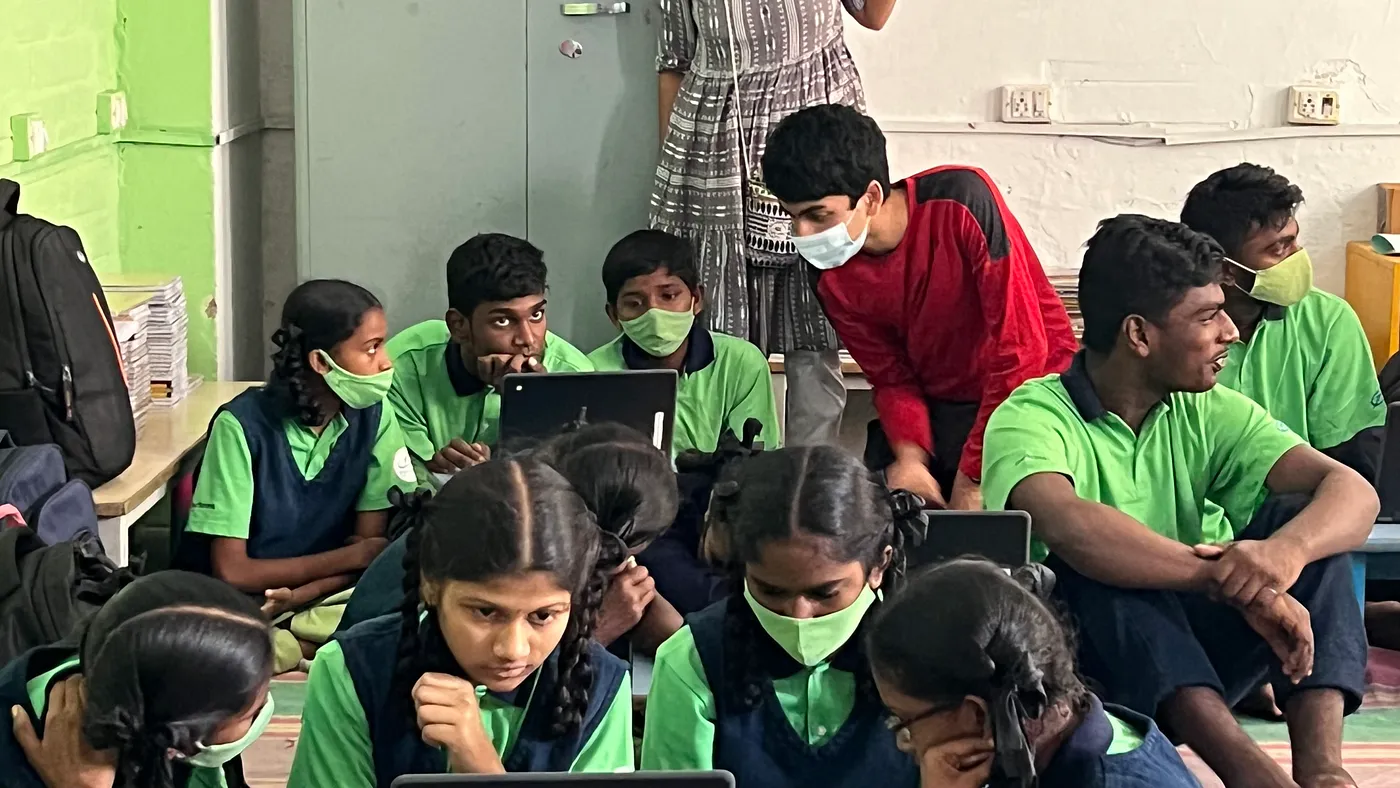
During the workshops, I taught them Python because it’s a popular, powerful, and beginner-friendly programming language. The emphasis of the course was to instill CS fundamentals so we spent time on variables, conditional logic, and loops. The students also learned how to use the VS Code IDE and run their Python files through the terminal. They also used this opportunity to improve their computer operational skills, quickly mastering keyboard shortcuts and making great use of touchscreen. I grouped the students into teams of 3 to 4 students that each clustered around one of the 10 computers.
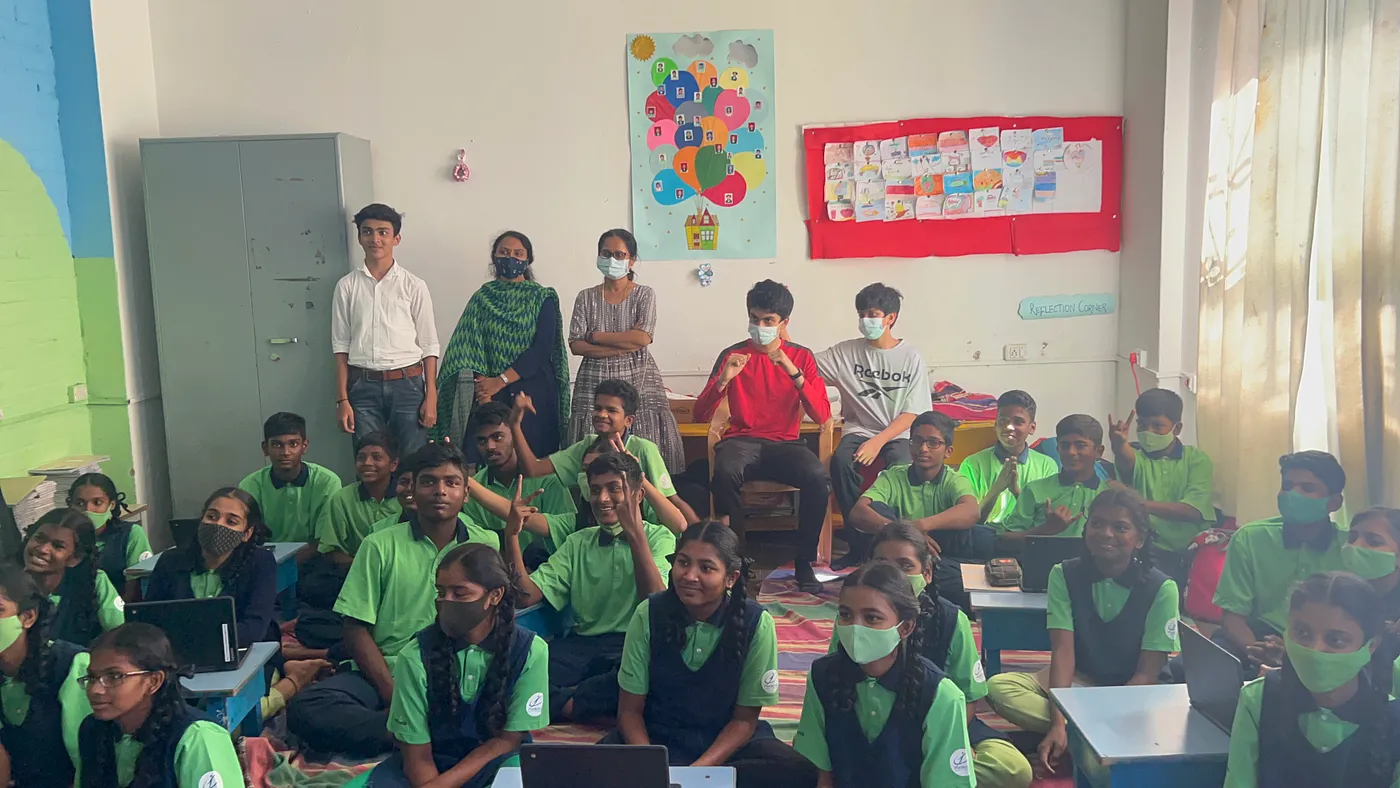
One student who I fondly remember is Monish. I was impressed with his initiative when he asked me during the break for help with a challenging coding problem that he was tackling. It’s hard to do a lot without guidance with only a few days of Python knowledge, but he was using his newfound knowledge to go past the syllabus and solve a problem of his choice. He was a great influence on the other students and worked really well with his teammate Sahana, who was likewise very talented and motivated to master the material. I also want to shoutout Vincye, who was bold, outspoken, determined, and asked me a lot of fun, memorable questions throughout the program and even if we could take a picture together at the end!
On Wednesday, I kicked off the day with video-calling the rest of the Paly Python team. The members were strewn across the west and east coasts of the US, and many had graciously stayed up late at night to make this event possible. Jerry and Arav were all game for answering the many questions the students levied at them from favorite sports to foods, and I really appreciated Milind’s insightful, encouraging words about why the students should continue exploring CS. I could tell that the Parikrma students found the experience to be valuable and intriguing, and many of them walked up to the computer and shared their names and interests with the team. I heard many mentions of cricket and tennis, and one instance (or should I say serving) of chole batura.
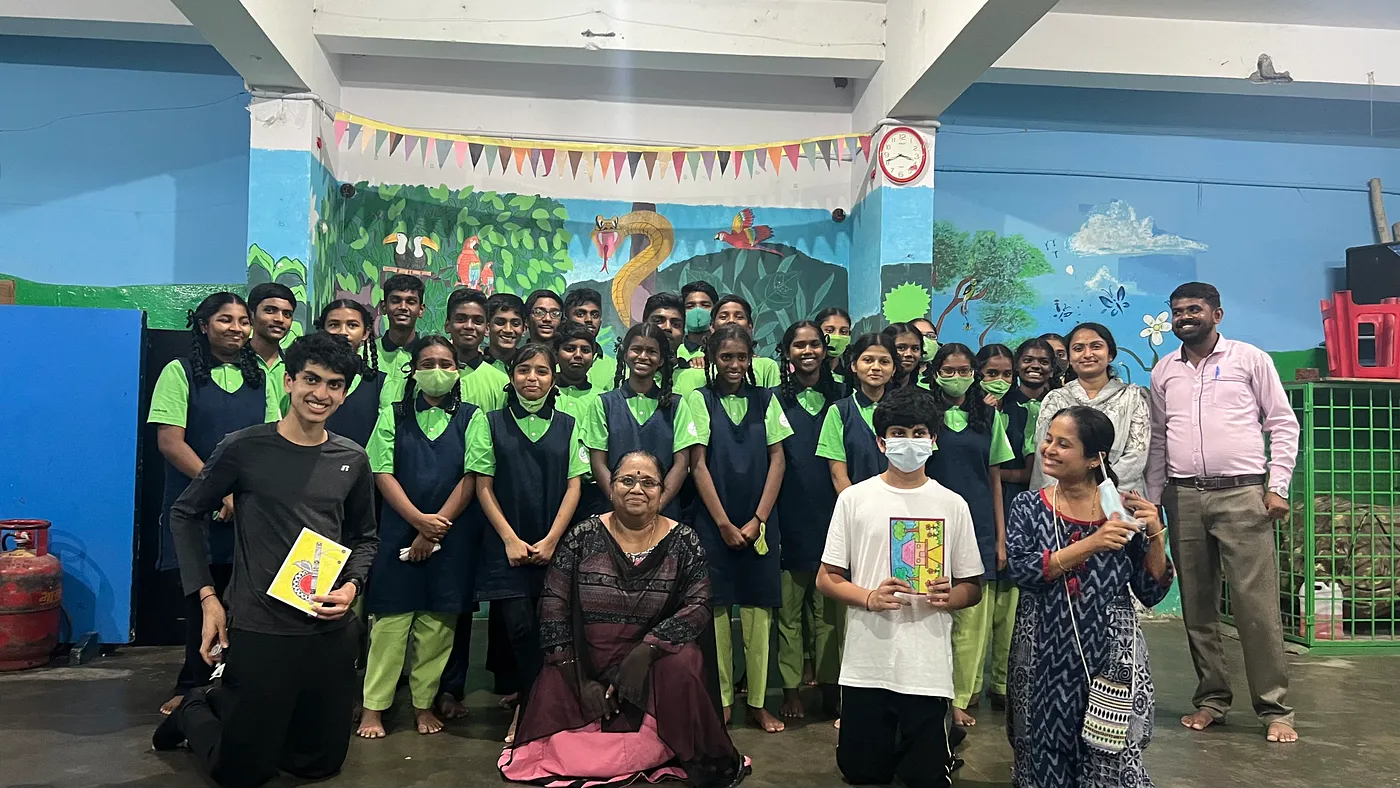
At the end of our time at the Koramangala school, we gathered together on the ground floor for card giving, share and tell, and pictures. The Parikrma students then presented my mother, Aaquib, Arjun, and I with personalized cards with their own beautiful artwork on the front and thoughtful handwritten messages inside.
Parikrma Jayanagar
Parikrma Koramangala went really well but it was still a first trial with plenty of mishaps and difficulties. Some examples of room for improvement were moments when the students told me I was speaking too quietly, technical difficulties which prevented me from using slides on the first day, and glitches with the chromebooks. I brought over what worked to Parikrma Jayanagar and found ways to overcome the hurdles I faced during the first iteration.
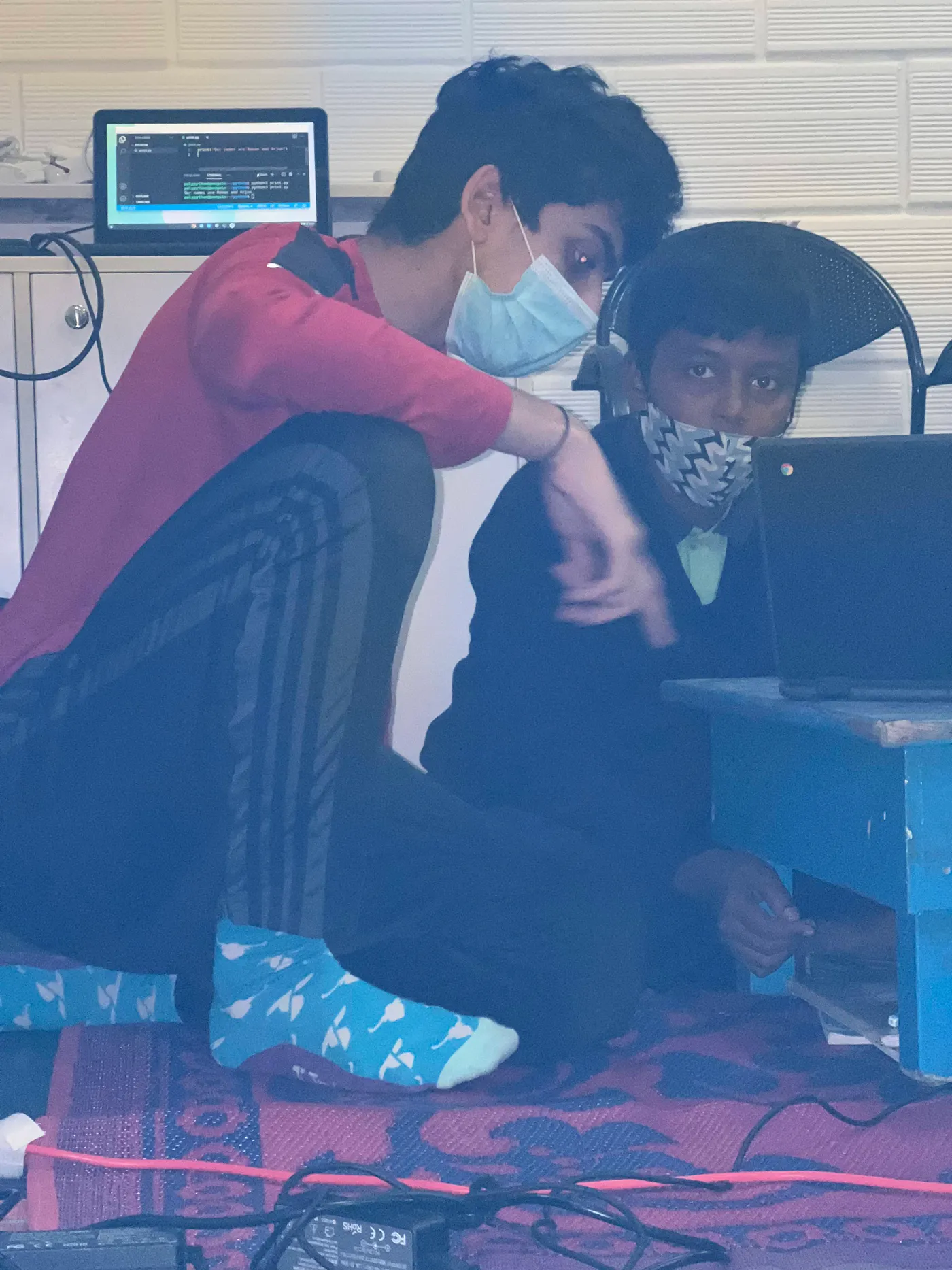
One of the highlights of the course was when the students and I made the “Guess the Number” game together. I first explained how the game worked by drawing it out on the whiteboard and asking them for guesses.
What stands out to me was the pure joy and fun the students had when testing their “Guess the Number” games. One group called their CS teachers over to have a try and then me. The excitement in the air was palpable, and I loved sitting back and watching the students marvel and play around with what they had created.
I would describe my teaching philosophy as similar to the adage of fishing. Instead of giving the students a “fish”, I preferred to teach them how to fish. So when the students called me over for help and asked me to fix their errors, I did not give them the answer outright or even type on their computer. Instead, I guided them toward the answer or would make sure that I was at most telling the students which keys to press and why. I wanted the students to type out what I was telling them for themselves so they would know how to do it in the future. During the lectures, I would also put up practice problems at regular intervals. I’d take that time to check in with each group individually and answer any questions they had in a more personal setting.

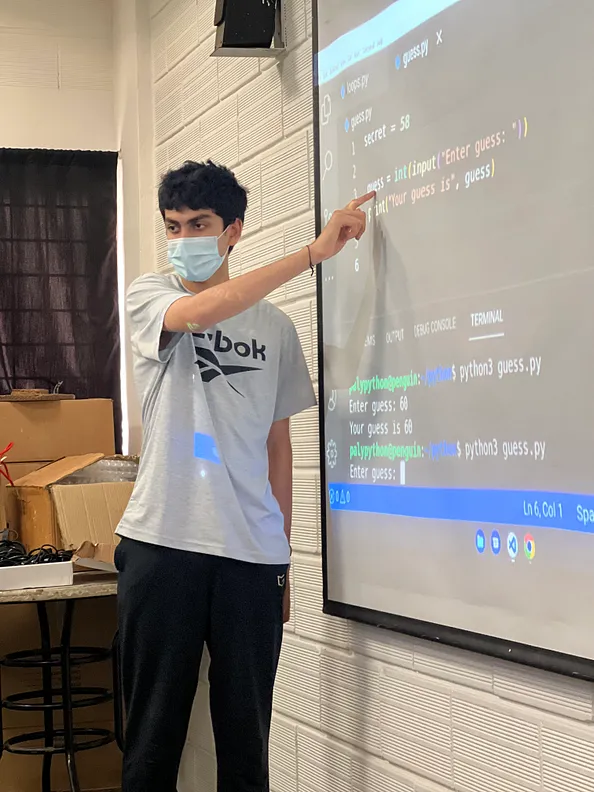
The Parikrma students asked me many questions about myself, one of which was whether I had a YouTube channel. I do have a channel where I upload original raps and songs, but I told the students I would only share it with them at the end of the course so they wouldn’t get distracted in the meantime. I ended up performing my “Ultimate Java Rap Tutorial” for them live and had a lot of fun doing so. After my impromptu rap, Kalpana proceeded to freestyle an entire song with the catchy refrain, “Paly Python is a lot of fun, bring it on, bring it on” while we all clapped and sung along.
Like Koramangala, the students at Jayanagar gifted us with amazing cards and a beautiful framed hummingbird drawing to remember Parikrma by. I really appreciate reading my card to which each student had contributed an adjective of their choice.


Next Steps — Continued CS Education through Computer Lab + Mentorship Program
I set up two permanent computer labs at Parikrma with ten computers in total spread out across two of their schools in Koramangala and Jayanagar.
I’m also coordinating a mentorship program for Parikrma students. Over the course of 4 weeks, a Paly Python team member or handpicked student volunteer will meet with team of 2–3 Parikrma students and help them continue learning advanced Python skills and create their own projects. We are organizing it this way to preserve the small group teaching style which was so effective during the initial course.
I’m also working on creating a volunteering pathway between Parikrma and my school, Paly High. The goal is to create permanent bridges between the schools which will persist even after I graduate. That way, students from my school in the US can volunteer and meet their counterparts in India, and both schools can share learnings and experiences with each other.
This is the end of this blog post but only the beginning of Paly Python’s mission to empower students worldwide. Thanks for reading!